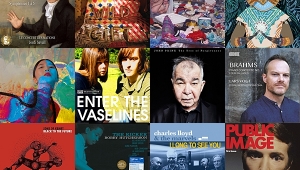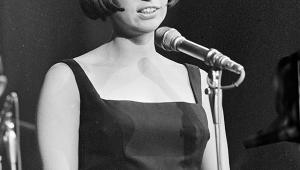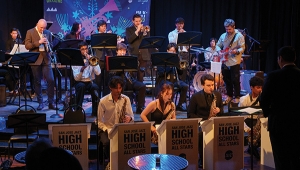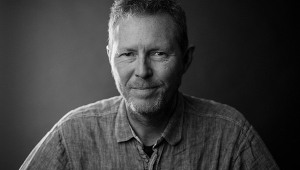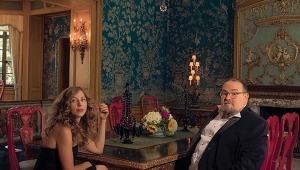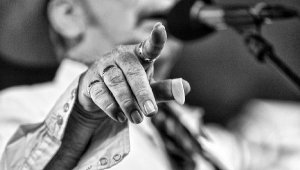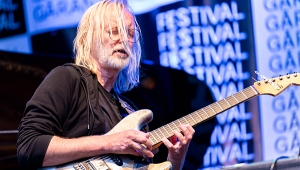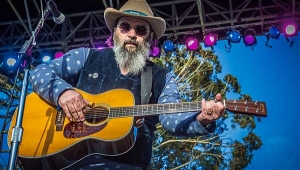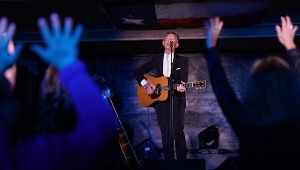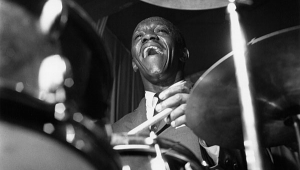| Columns Retired Columns & Blogs |
Building a Library: The Grateful Dead Page 5
This leads into the meanderings or the paths, everyone finding their own way, getting there, inhabiting the moment that is music in its fullest sense.
Footnote 11: Jean-Phillip Rameau (1683-1764), French musician and music theorist. See Grout, History of Western Music, pp.411-417, for an overview. W.W. Norton & Co., 1973.
While Rameau (footnote 11) would be astounded at Weir's chord inversions, nowhere is the idea of the Fundamental bass (basse fondamentale)---"root progressions in a succession of harmonies"---better illustrated than in the playing of Phil Lesh. I happily and shamelessly repeat Rob Bowman's comments on "the boys": "the idea of bass/guitar counterpoint was intrinsic to the stylistic alchemy of the Dead...Lesh laughingly concurs, 'Some reviewer described the way I play as being like a sandworm in heat wrapped around Garcia.' "
I would also like to add that the range of Phil Lesh's playing has singularly propelled subwoofer design over the last three decades. I look forward to full-range discrete six-track remixes, not only for the restoration of the spatial dimension of live performance, but because more people will be able to hear the walking bass and deep grooves of Lesh's matchless playing.
Mercurial in temperament, Bill Kreutzman is steady in tempo. He drives Hundred Year Hall through experiment and shenanigans, shifting gears effortlessly. Phil Lesh: "Billy played like a young god on this tour. I mean he was everywhere on the drums, just kickin' our butts every whichway, which is what drummers live to do, you know" (footnote 12). Kreutzman also is a master of air and space, capable of eliciting lightness and sparkle with a touch of a cymbal, delicate pixie dust shimmering down through the years.
We forget how dominant Pig Pen was, how his blues-based storytelling kept wave after wave of white suburban/urban teenagers' backfields in motion. "Love Light," often these kids' first introduction to the rich double entendres of the blues, is also on Hundred Year Hall, in a humorous, zippy-paced effervescent version. The transition between "Turn On Your Love Light" and an almost "Not Fade Away" shows a delicate sheerness and a revealing exchange of themes, a signature transition, a lingering sweetness, and then the relentless drive of the backbeat---a slight ritard, a change of mind, and at last a return to the sweet richness and poignancy of "Goin' Down the Road Feeling Bad." Disc one closes with "One More Saturday Night," a classic rock'n'roll tune.
I confess to a preference for the early LPs and the live recordings. When The Grateful Dead was released in 1967, Vietnam was a place we were just beginning to hear about. Bobby Kennedy and Martin Luther King were still alive, and word of the Summer of Love was being delivered not just by Time and Life, but in high schools and colleges around the nation by The Grateful Dead on acetate. Historically, this album shared in the spirit of the time and was subject to endless playings, whether to invite the Gods in or to keep parents out.
Repetition is inherent to music, and the LP certainly lent itself to ease of repetition. Over and over, each iteration of the blues grooves of "Good Morning Little Schoolgirl" or the pensiveness of "Morning Dew" presented a different view, led to a different interpretation, perhaps even a different reality.
In retrospect, the theme of The Grateful Dead is promise and faith: Whether it's "Cold Rain and Snow" 's "I'm going where those chilly winds don't blow," or "Sittin' On Top of the World," or "Cream Puff War" 's reminder to "Wait a minute, watch what you're doing with your time, / all the endless ruins of the past must stay behind." The incredible Hammond organ sound and bass lines of "Cold Rain and Snow," the classic fade on "Sittin' on Top of the World" hint at how many years it would take the band to actually learn how to end a tune, and how, from the get-go, the idea of openness was key.
See that girl barefootin' about,
whistling and a-singing she's a-carrying on,
there's laughing in her eyes and dancing in her feet
...try on your wings...
Footnote 11: Jean-Phillip Rameau (1683-1764), French musician and music theorist. See Grout, History of Western Music, pp.411-417, for an overview. W.W. Norton & Co., 1973.
- Log in or register to post comments
